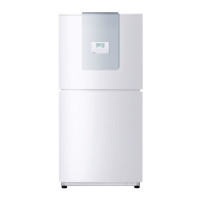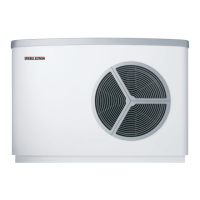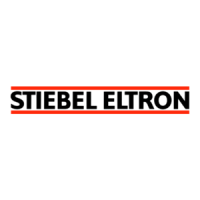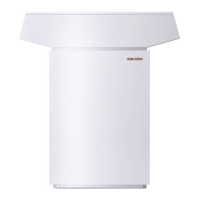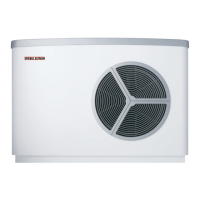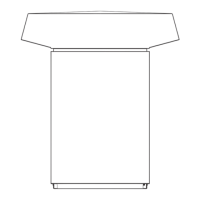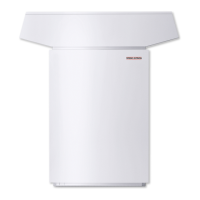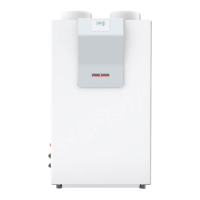9
860
260 65
50120
760
Hauptwindrichtung
Lufteintrittseite
Luftaustrittseite
Foundation for external installation when using pressure hoses
Kerb stones for external installation
26_03_01_303
Dimensions in mm
Fig. 5
Dimensions in mm
680
660
Hauptwindrichtung
Luftaustrittseite
Lufteintrittseite
1 Impact sound insulation
2 Floating screed
1
2
Fig. 8
Recess the screed and the
impact sound insulation.
Fig. 7
Fig. 6
1 Equipment foot
2 Sliding shoe
1
2
3.3.4 Flushing the heating system
Thoroughly flush the pipework before
connecting the heat pump. Debris, such as
welding pearls, rust, sand, sealant etc. can
impair the operational reliability of the heat
pump, and can lead to a blocking of the
condenser.
When filling the heating system with heating
water, observe VDI 2035, sheet 1 [or local
regulations]. Particularly ensure that
z during the service life of the system, the
total fill and top-up water must not exceed
three times the nominal content of the
heating system,
z the total alkaline earths in the water must
be < 3.0 mol/m³,
z the total water hardness must be < 3
mmol/l
z the water must be softened, if the above
requirements are not met.
Generally soften the heating water if the speci-
fic system content is > 20 l/kW output (e.g. in
case of system with buffer cylinder).“
3.3.5 Venting the heating system
Air pockets in the system are detrimental to
the heat pump function.Vent the pipework
thoroughly. For this, also activate the air vent
valve integrated into the heating flow.
3.3.6 Oxygen diffusion
Steel components, such as radiators and
pipes, can corrode if plastic underfloor heating
system pipes, which are permeable to oxygen,
are used.
The product of corrosion, i.e. rusty sludge, can
settle inside the heat pump condenser and can
result in a lower output through reduction of
cross-section or in a shutdown being activated
by the high pressure limiter.Therefore it is
advisable to avoid open heating systems or the
installation of steel pipes in conjunction with
plastic pipes in underfloor heating systems,
which are not impermeable to oxygen.
3.3.7 Scaling
Water quality, operating conditions and the
water volume are decisive factors to the extent
of scaling. To prevent damage to valves, heat
exchanger and heating elements, check the
water condition and assess it in accordance
with VDI 2035 [or local regulations].
Note: An awareness of hardness in
accordance with the Detergent Act [Germany]
is insufficient. Decisive for scaling is the
concentration of calcium hydrogen carbonate,
which can be supplied by your water supply
company.
3.4 Circulation pump
Circulation pump in the heat pump circuit
(buffer cylinder primary pump)
Determine the pressure drop for the
interconnecting line between the WPKI 5 and
the heat pump, if you are using the cylinders
SBP 200 or SBP 700 (buffer cylinder) and the
heat pump compact installation set WPKI 5
(see table in the next column).
The total pressure drop is the sum of the
26_03_01_0302
26_03_01_301
26_03_01_300
Main wind direction
Main wind direction
Air outlet side
Air outlet side
Air inlet side
Air inlet side
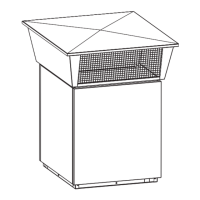
